Development Reduces the Native Seed Source
It is no coincidence that most areas infested with invasive species are those places where humans have significantly altered the landscape through clearing and earth-moving activities.
Such activity typically destroys the existing native plant community and supporting soil structure, while also creating a void for invasive plants to easily fill.
Replanting native plants can and should be used in the fight against these prolific non-natives.
Native Communities Naturally Protect Against Invasive Species
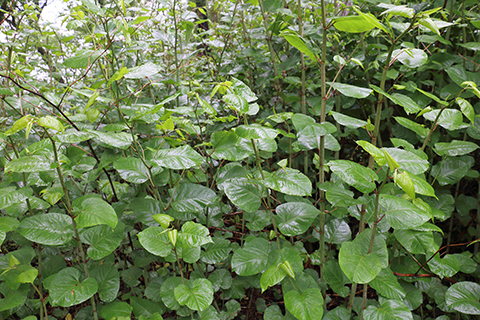
Invasive Japanese knotweed
It is interesting to note how few (if any) invasive plants exist in undisturbed environments like mature forests.
These growing sites are already occupied and continuously subjected to seeding cycles of the dominant native plants nearby.
The ecosystem in turn supports and assists native plants in establishing future generations through seed dispersal, pollination, and other beneficial interactions.
If we want to get the upper hand on invasive plants, then we need to take a page from nature and restore our native seed source plants to a dominant status in our manipulated landscapes. Doing so will help to restore a functional ecosystem.
Grow It and They Will Come
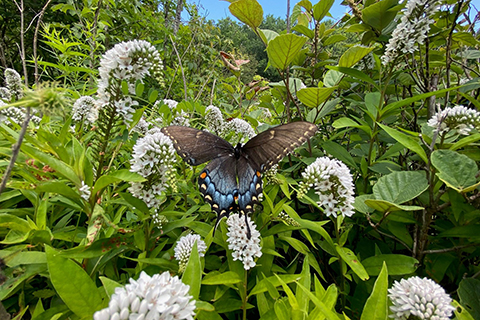
Swallowtail in native garden
Amazing things begin to occur when you plant native plants. Fewer invasive species will populate these restored areas, and suddenly, native pollinators like butterflies, hummingbirds, and moths will visit your land.
Some insect pollinators may even take up residence for quite some time on your property -- completing all or part of their annual life cycle (like monarchs, for instance).
With new native insects in the fold, their appropriate native bird predators will also follow, gobbling up larvae to feed their nestlings.
The nestlings may grow up to feed on some of the native seeds in your native garden, and spread them far and wide while foraging in other places, creating a cycle that can eventually lead to a sustainable source of native seeds and the plants that come from them.
To become sustainable, this process likely requires our native plants to greatly outnumber the invasive ones, though.
A New Philosophy on Disturbed Lands
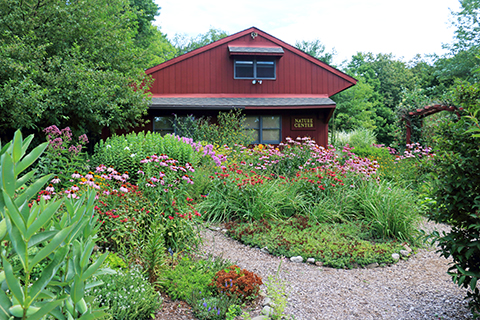
Mount Pisgah State Park native garden
Every disturbed land should be viewed as an opportunity for restoration of native plants.
Perhaps there will come a day when complete restoration to a native habitat will be the standard, rather than planting some grass and a few non-native trees.
A few governing bodies throughout Pennsylvania and surrounding states already incorporate this ethic by policy or ordinance, mandating that replanting efforts include native plants; but more is needed.
The Future Is Bright for Native Plants
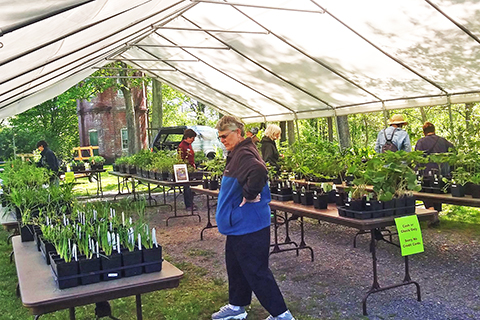
Kings Gap Environmental Education Center native plant sale
There seems to be a growing tide of momentum and interest in the native plant movement.
Native plant sales abound in the spring, more native nurseries seem to crop up almost overnight, and these enterprises are certainly gaining popularity.
DCNR’s Buy Native Plants web page lists 36 nurseries from which to choose and buy native plants, and that number has grown rapidly over the years.
Many larger commercial nurseries also offer native options, highlighting native plants by category.
Wanted: Your Participation
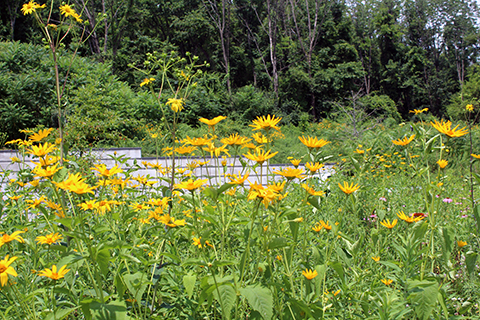
Native plant garden at Jacobsburg Environmental Education Center
The prospect of outcompeting invasive species by planting natives on a large-scale basis is not realistic if there is not enough human participation.
For true ecological restoration to occur, native plant networks must be formed, entailing private residences and developments, golf courses, industrial complexes, community parks, and other open lands.
With spring just around the corner, it’s a great time to begin planning your native planting. Your contribution, however small, will help in the fight against invasive plants in the long run!